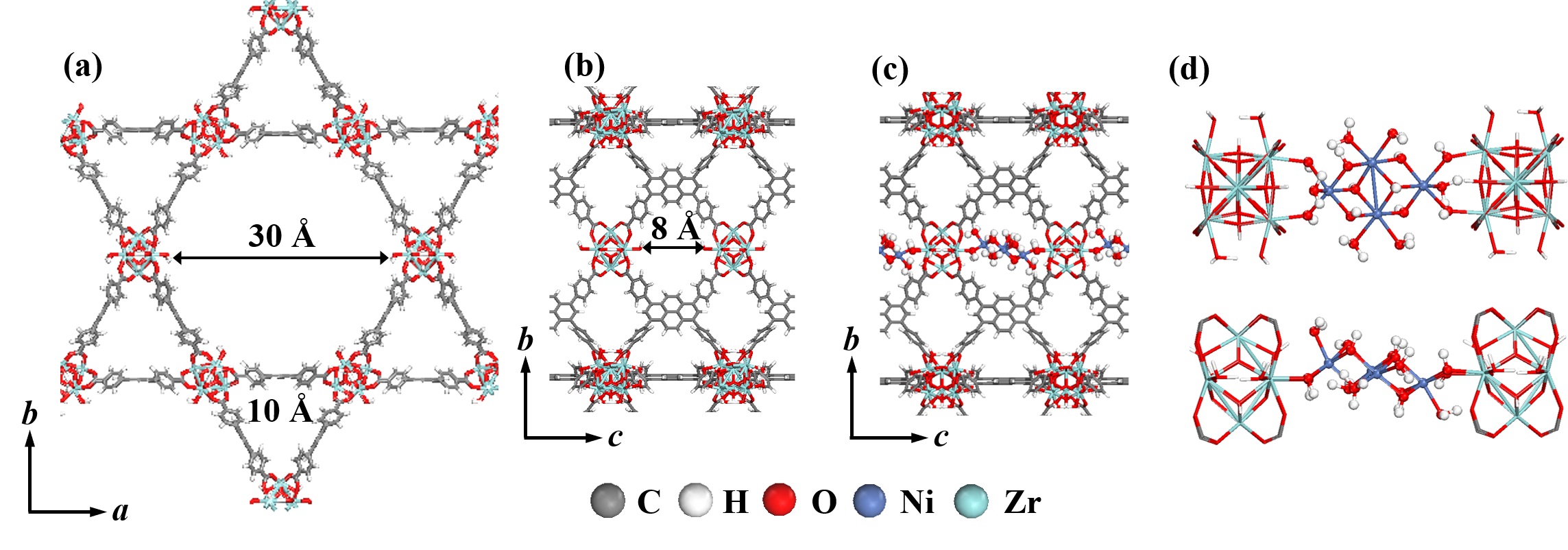
Dr. Jingyun Ye, a postdoctoral scholar in the research groups of Chris Cramer, Laura Gagliardi, and Don Truhlar, received a poster competiton award for her poster “Computational Study of MOF-Supported Metal Catalysts for Ethylene Dimerization” at the conference on New Challenges in Heterogeneous Catalysis at the King Abdullah University of Science and Technology(KAUST) in Thuwal, Saudi Arabia on January 29. The poster was coauthored by her three co-advisers and Aaron League and Varinia Bernales in our department and by four collaborators at Northwestern University, five at Pacific Northwest National Laboratory, and five at Argonne National Laboratory. The work was sponsored by the Inorganometallic Catalyst Design Center, an Energy Frontier Research Center funded by the U.S. Department of Energy, Office of Basic Energy Sciences.
Metal-organic frameworks (MOFs) with ultrahigh porosity and large surface area have recently emerged as excellent heterogeneous supports for transition metal catalysts, by either functionalization of the organic linker or direct modification of the inorganometallic nodes. NU-1000 is a mesoporous MOF of particular interest due to its chemical and thermal stability. Its coordinatively unsaturated metal sites at the inorganic nodes provide postions at which highly dispersed and isolated single-site catalytic metal oxide catalysts may be anchored, and its large pore size (~30 Å can can facilitate the diffusion of gaseous molecules to and from these catalytic sites. Through atomic layer deposition, a highly dispersed Ni catalyst (Ni-NU-1000) was successfully synthesized; it shows good activity for ethylene ethylene oligomerization but poor selectivity for 1-butene production.

Figure 1: (a) Structure of NU-1000, (b) and (c) the small pore of NU-1000 without and with Ni hydroxo cluster bridging between the two Zr nodes, (d) the top and side view of structure of Ni hydroxo cluster.
The poster reported computational simulations to develop a model for a Ni catalyst supported on NU-1000 and the use of this model to identify the catalytically active sites for ethylene dimerization reaction at the gas-solid interface of the MOF. The calculations show that the catalytic activity of Ni-NU-1000 for ethylene dimerization depends more strongly on the spin state of the Ni atoms than on the Ni-oxo cluster size. Furthermore, a variety of metals were screened to search for potential catalysts with increased selectivity for 1-butene production. As a result, CrII, NiII and PdII are predicted to be the most promising catalysts for ethylene dimerization.

Figure 2: Ni supported NU-1000 for ethylene dimerization: Cluster Size vs. Spin State.
Publications:
“Single Ni Atoms and Ni4 Clusters Have Similar Catalytic Activity for Ethylene Dimerization,” J. Ye, L. Gagliardi, C.J. Cramer, and D.G. Truhlar, Journal of Catalysis 354, 278-286 (2017).
“Computational Screening of MOF-Supported Transition Metal Catalysts for Activity and Selectivity in Ethylene Dimerization,” J. Ye, L. Gagliardi, C.J. Cramer, and D.G. Truhlar, Journal of Catalysis (in press).